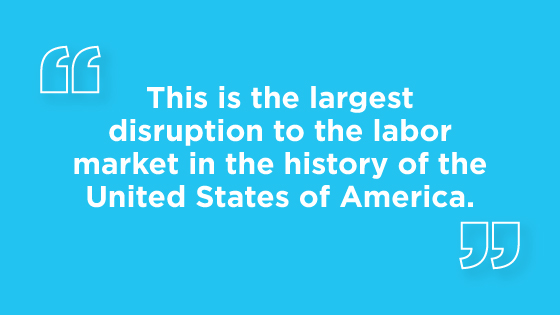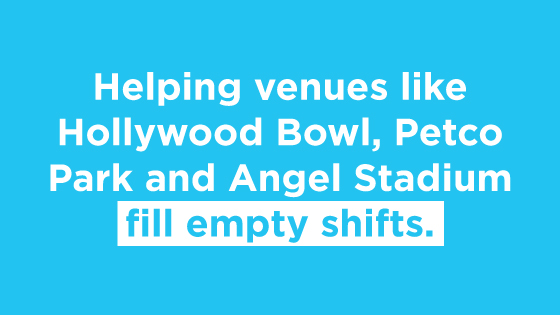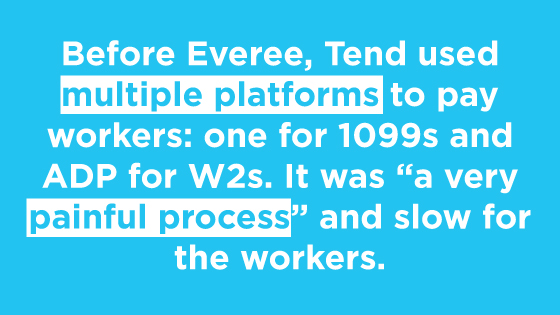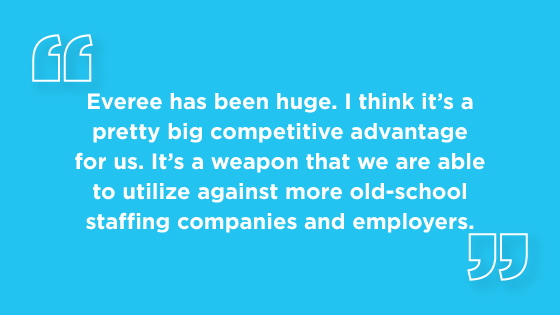If Disney’s having staffing problems, who isn’t?
Fresh out of college, Davis Waddell landed a job as an analyst at Disney, where he was tasked with finding sites for expansion projects, new cruise lines, new hotels and new theme parks.
While everyone was excited to talk about new projects, teams were always worried about the same thing: finding enough staff.
“I thought it was interesting because Disney has advantages that nobody has because the brand is so beloved,” Davis says. “I was like, look, if they’re having problems with staffing, everybody has to be.”
Davis believed there had to be millions of people who’d work for Disney on some basis, but the bulk of those folks probably wouldn’t want to join a union or work full-time. Seeking a way to provide flexible job opportunities to service workers who need the freedom to work where and when they want, the idea for Tend was born.
Tend is an on-demand staffing platform that enables customers to hire experienced hospitality professionals — including bartenders, waitstaff, and concession workers — at a moment’s notice. The company, which Davis founded in 2018, is headquartered in California and available in more than 20 states across the U.S.
Helping venues solve a ‘full-blown labor crisis’
Just a few months after Tend launched in 2019, the world shut down as COVID-19 spread. Almost overnight, Tend’s business fell to zero — just like countless other companies.
A lot has changed in a year. As the U.S. opens back up, many businesses are struggling to hire workers due to a confluence of factors.

“This is the largest disruption to the labor market in the history of the United States of America,” says Davis, who’s CEO of Tend (or Tender in Chief, as he likes to say). “You have people who moved, you have people who switched industries, and you have people who are still receiving unemployment — things which have all come together to create a full-blown labor crisis.”
Where other businesses see the labor shortage as a challenge, Tend sees it as an incredible opportunity.
“Right now, it’s really all about enticing people who want to work,” Davis continues. “Obviously, that means higher pay. But I think it increasingly also means flexibility, being able to control your own schedule, and being able to be paid quickly.”
And that’s exactly what Tend offers; staff can work at their own convenience, only accepting jobs they want to do that pay a certain price point. Currently, about 10,000 people are available for on-demand work across the Tend network.
“For the foreseeable future, I think it’s just going to be all hands on deck to get people back to work,” Davis explains. “They want to work, and employers want to find the right people. We’re just a way that those two groups of people can find each other.”
Getting back to full capacity rapidly
In February 2021, sports stadiums were given guidance they’d be operating at 25% capacity. Then a month or so later, they were suddenly told that they could operate at full capacity. This about-face put stadiums across the country in quite the predicament: Most venues simply lacked the capability to hire that much staff with any sense of urgency.
“It’s the same story everywhere,” Davis says. “Stadiums lack the internal tooling to ramp up hiring like that. It’s just not something they’re used to doing. So, they’re relying on temp workers more than they ever have.”
And this is exactly where Tend enters the equation. The company hires a slate of temp workers, known as Tenders, and then matches them with jobs on an as-needed basis. Each of these workers is heavily vetted to make sure they have the skills and attitude needed to deliver strong customer experiences.

To date, Tend has played a crucial role in helping venues like Hollywood Bowl, Petco Park, SoFi Stadium, and Angel Stadium fill shifts with temp workers.
“We’re not cannibalizing people who want to work for the stadiums full-time,” Davis continues. “We’re hiring folks who can pick up jobs at Dodger Stadium or Angel Stadium, once this week, three times next week, zero times the following week, and then twice the week after that.”
Enticing temp workers with immediate payouts
Tend’s job isn’t just helping workers find gigs. It’s also making sure they get paid.

Unlike some staffing platforms that only deploy 1099 workers, Tend architected its product from the beginning to also have W-2 workers. Davis knew this would be critical as they scale because of operating in states like California with complex compliance needs and because they have enterprise clients who require W-2 workers. At first, they were using two different systems to pay workers: A payments app to pay 1099 contractors and ADP to pay W2 employees in what was a “very painful” process, Davis says.
Seeking a better way forward, Tend ultimately came across Everee, the only platform that lets businesses pay 1099 contractors and W-2 employees same day. The company hasn’t looked back since.
“We have one platform that can support both. It’s amazing. We’ve pretty much picked our vendors and built our whole system around that flexibility,” says Davis.
Accelerated payments to hire faster
With Everee, Tend is able to pay Tenders quickly, reliably and transparently, whether they’re W-2 employees or 1099 contractors — functionality that sets Everee apart from all other payment solutions on the market. With Everee, Tenders get paid the day after a shift no matter their classification.
After making the move to Everee in the first quarter of 2021, Tend has seen how offering fast payments is an effective way to hire talent in a difficult job market.
“Most Tenders are probably someone who works between 20 and 40 hours a week doing something else, and then picks up one or two shifts with us,” Davis continues. “They like the fact that they’re getting paid faster than usual for a job that gives them a change of pace.”
Improved margins
In fact, Davis says that Tenders are actually OK making 10 to 20 percent less if they get paid shortly after they finish a shift versus having to wait two weeks — something crucial for Tend, which is able onboard more workers while increasing its margins as a result.

“The number one reason we switched is that we needed to figure out a way to pay our people much faster or else we weren’t going to make it,” Davis says. “Everee has been huge. I think it’s a pretty big competitive advantage for us. It’s a weapon that we are able to utilize against more old-school staffing companies and employers.”
Streamlined backend processes
In particular, Davis loves the fact that he can onboard 1099 and W2 workers from the same admin dashboard and manage multiple companies in multiple regions in one place. This is particularly important in California due to AB5, a law which requires some businesses to reclassify contractors as employees.
“The ability to manage all of these intricacies from one platform and have it be uniform has been a huge help,” he says. “Even just from a support perspective: Our support agents have to learn how to use one system, and they can manage the jobs across different states.”
Exceptional worker experiences
Now, when a Tender talks with another temp worker at a stadium or venue, they often end up chatting about how they’re going to get paid tomorrow for today’s work. This invariably leads to temp workers asking more questions about Tend — and often opting to sign up for the service themselves.
Thanks to Everee’s lightning-fast payments for both 1099 and W2 workers, Tend is able to expand its network via word of mouth.
Becoming a trusted marketplace for temp workers
Looking ahead, Tend sees itself becoming the go-to marketplace to find highly qualified, temporary workers quickly. At the same time, they also want to do what they can to fight wage stagnation and make sure the best workers are compensated well for their time.
“We can objectively judge who’s performing well based on reliability scores and feedback,” Davis explains. “Good employees and hard workers can advance, make more money, and be rewarded. Ultimately, we’re building our product for workers.”
With Everee serving as the underlying payment platform that Tend runs on and the demand for flexible workers increasing, the future looks brighter than ever.
“These people are absolutely relying on us to keep the engine of their operations turning, which is a great spot to be in as a business,” Davis concludes.
Want to hear more from Davis? Listen to his Gigging Out podcast episode.

